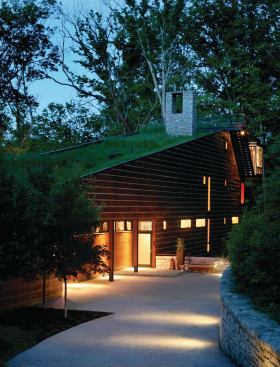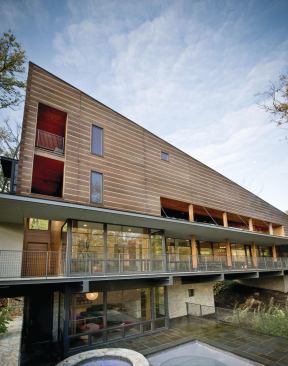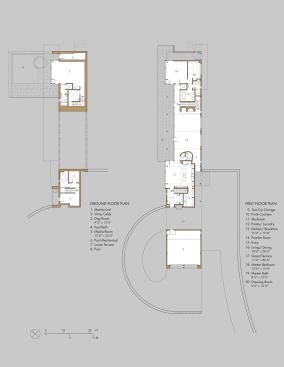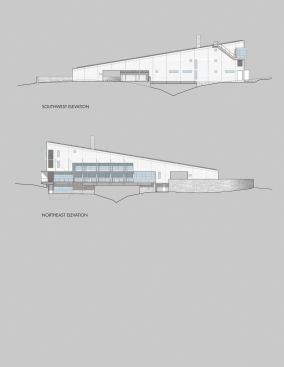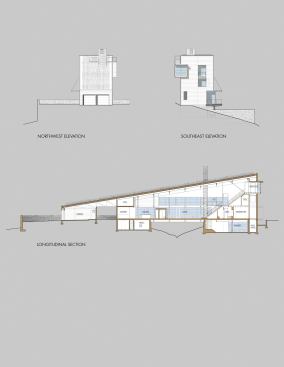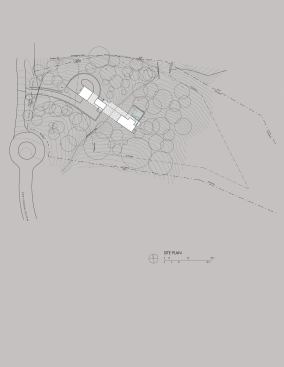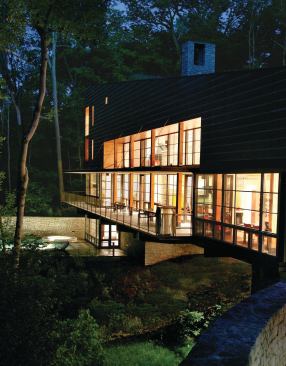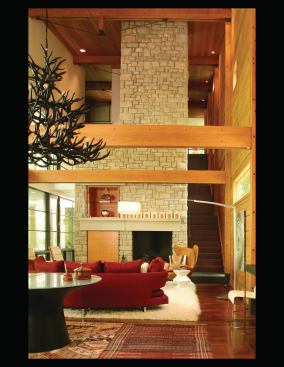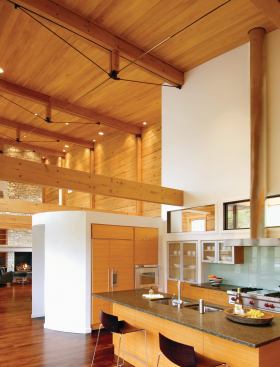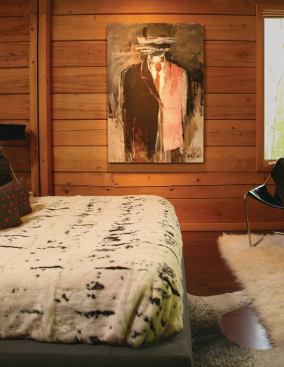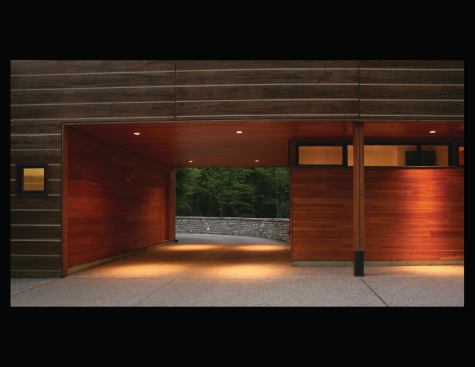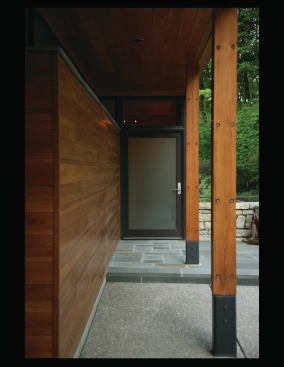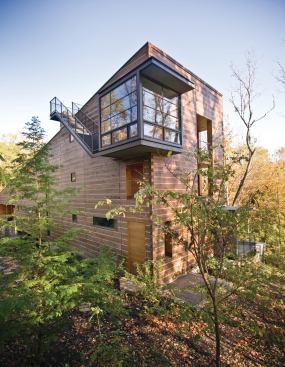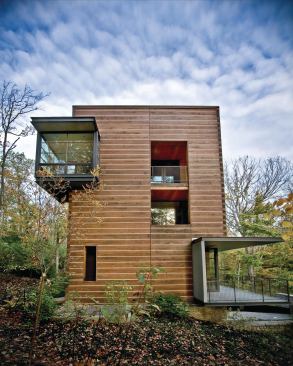Natural Bridge
Rustic yet refined, this site-sensitive outpost isn’t your typical log cabin.
Eric Williams
Walnut Woods Cincinnati
The creek on this three-acre property was not to be disturbed, per neighborhood covenants. That didn’t stop the owner from building the log cabin she’d always wanted. The house straddles 40 feet of creek bed, preserving the land’s natural drainage patterns.
That’s not all that distinguishes this 4,850-square-foot home in a neighborhood of traditional-styled residences with manicured landscaping. Its rustic skin of red tidewater cypress is counterbalanced by large spans of glass—most notably, a double-height window wall that opens onto an 80-foot cantilevered terrace—and its lawn is on the roof, so as not to disrupt the forest floor. Measuring 23 feet wide, the structure’s slim profile spared many trees that would have been felled for a house of squarer proportions. And the few walnut trees that were cleared were locally milled and resurrected as hardwood flooring.
Getting building materials to the site involved some logistical wrangling. The cambered steel beam that spans the creek and supports the patio measures 66 feet long and 30 inches deep, and weighs about 9,000 pounds. “It’s the longest beam the foundry had ever rolled. The load limits over road are usually 60 feet, so we had to get permission to get the extra length over the highway,” explains architect John Senhauser. “On site, we built a temporary bridge as a way to get equipment, people, and materials across the creek. Once the house was built, we disassembled the bridge and sold it.”
